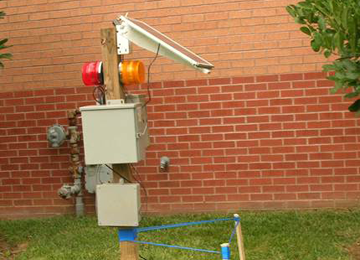Blasting. Hoe ramming. Excavation. Compaction. Pile driving. Demolition. If you’re planning or working on a construction or renovation project, you’ll be conducting at least one of these activities. While each is distinctly different, all share one thing in common: They all generate vibrations.
Under most conditions, construction activities don’t generate vibration levels large enough to cause damage. However, they can, and often do, generate complaints from surrounding property owners and occupants. In some cases, neighbors can also allege your construction project is responsible for their structural damage. This is especially true when a project is unwanted by its neighbors.
Since individuals perceive vibration very differently, it’s impossible to quantify vibrations based on a person’s description. Human perception is a very poor indicator of vibration levels and their potential to actually cause damage to structures. The only way to accurately determine vibration levels is to use a seismograph to measure and record vibrations generated by construction activities. A seismograph records a time history and the associated characteristics of the vibrations, including peak particle velocity (PPV) and frequency. This information can then be compared with published damage criteria for specific structure types to determine if vibration levels are high enough to cause structural damage.
Many existing structures have cracks or other cosmetic irregularities. It’s an interesting phenomenon that people often only notice these existing cracks or other irregularities after nearby construction starts. They mistakenly attribute the cracks to the construction activities. When used in conjunction with a preconstruction condition survey of nearby structures that documents existing cracks and signs of distress with photographs and/or video recordings, vibration monitoring is of even greater value. If a claim for damage does occur, the photographic record that documents existing conditions prior to construction can be used in conjunction with vibration monitoring data to effectively refute the damage claim.
Vibration monitoring is also an excellent risk management and public relations tool. By conducting vibration monitoring during construction, a goodwill gesture is shown to neighbors that their concerns are being addressed.
Another benefit is with predetermined actionable vibration limits and real-time vibration monitoring data, vibration-producing construction activities can be stopped if they exceed published or project-specific agreed-upon limits. This type of monitoring program can actually prevent damage from occurring.
Whenever construction activities are to be conducted near existing buildings, homes, historic structures, or sensitive equipment, vibration levels and their effects upon these structures should be considered. While some projects have vibration criteria written into the project specifications, many do not. By considering vibration issues before a project begins, an appropriate monitoring plan can be developed, and the issues can be addressed in a proactive manner. Such a program can protect the project from unnecessary litigation, while protecting adjacent properties from potential vibration damage.

